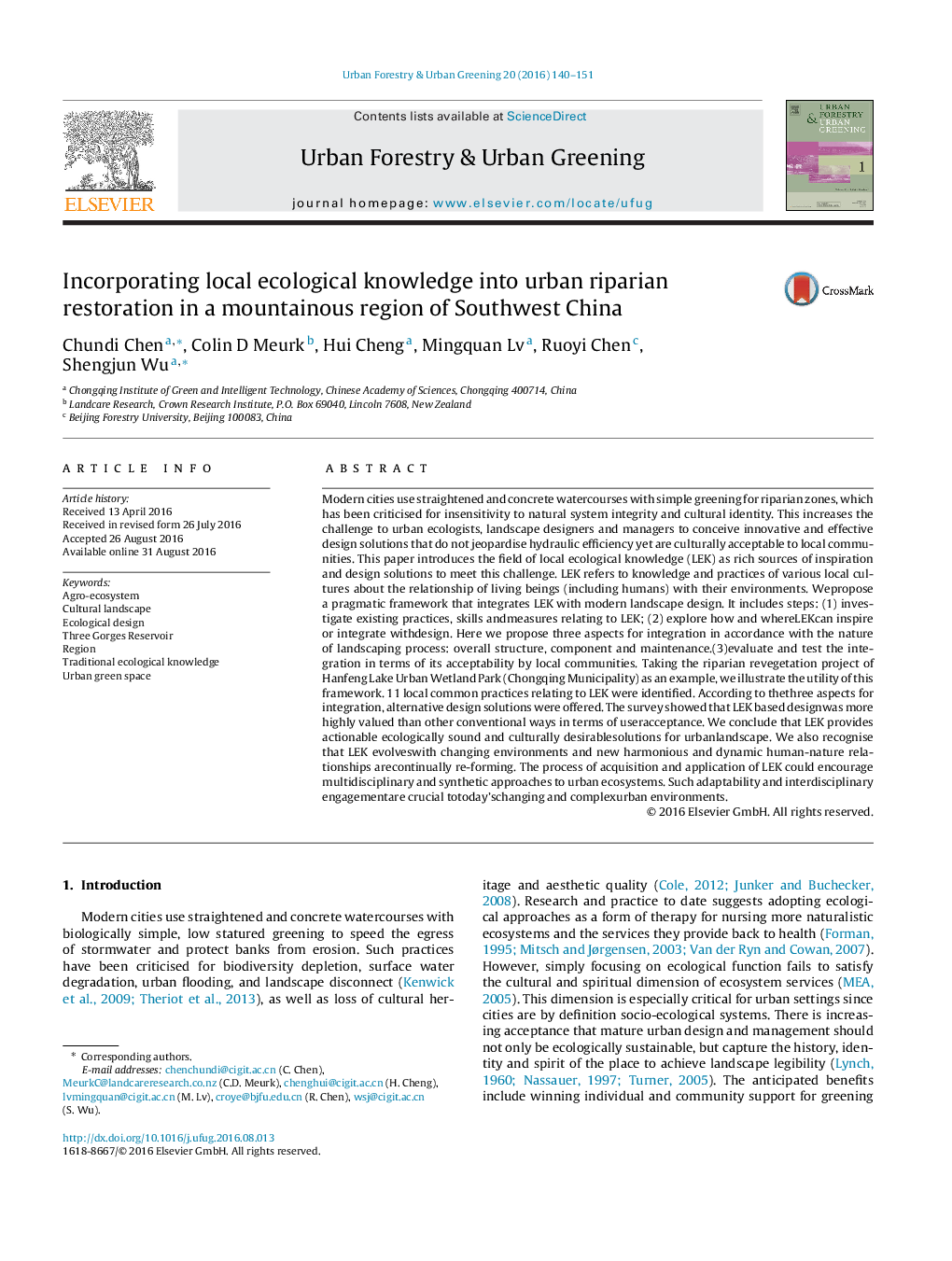| کد مقاله | کد نشریه | سال انتشار | مقاله انگلیسی | نسخه تمام متن |
|---|---|---|---|---|
| 6461897 | 1421870 | 2016 | 12 صفحه PDF | دانلود رایگان |
- We propose a practical urban green space design framework integrating local ecological knowledge (LEK).
- This framework offers three aspects for effective and substantive integration.
- The LEK based design is more highly valued than other conventional greening solutions.
- LEK is not static, but evolves with the changing environment.
- Application of LEK encourages interdisciplinary approaches to urban ecosystems.
Modern cities use straightened and concrete watercourses with simple greening for riparian zones, which has been criticised for insensitivity to natural system integrity and cultural identity. This increases the challenge to urban ecologists, landscape designers and managers to conceive innovative and effective design solutions that do not jeopardise hydraulic efficiency yet are culturally acceptable to local communities. This paper introduces the field of local ecological knowledge (LEK) as rich sources of inspiration and design solutions to meet this challenge. LEK refers to knowledge and practices of various local cultures about the relationship of living beings (including humans) with their environments. Wepropose a pragmatic framework that integrates LEK with modern landscape design. It includes steps: (1) investigate existing practices, skills andmeasures relating to LEK; (2) explore how and whereLEKcan inspire or integrate withdesign. Here we propose three aspects for integration in accordance with the nature of landscaping process: overall structure, component and maintenance.(3)evaluate and test the integration in terms of its acceptability by local communities. Taking the riparian revegetation project of Hanfeng Lake Urban Wetland Park (Chongqing Municipality) as an example, we illustrate the utility of this framework. 11 local common practices relating to LEK were identified. According to thethree aspects for integration, alternative design solutions were offered. The survey showed that LEK based designwas more highly valued than other conventional ways in terms of useracceptance. We conclude that LEK provides actionable ecologically sound and culturally desirablesolutions for urbanlandscape. We also recognise that LEK evolveswith changing environments and new harmonious and dynamic human-nature relationships arecontinually re-forming. The process of acquisition and application of LEK could encourage multidisciplinary and synthetic approaches to urban ecosystems. Such adaptability and interdisciplinary engagementare crucial totoday'schanging and complexurban environments.
210
Journal: Urban Forestry & Urban Greening - Volume 20, 1 December 2016, Pages 140-151
